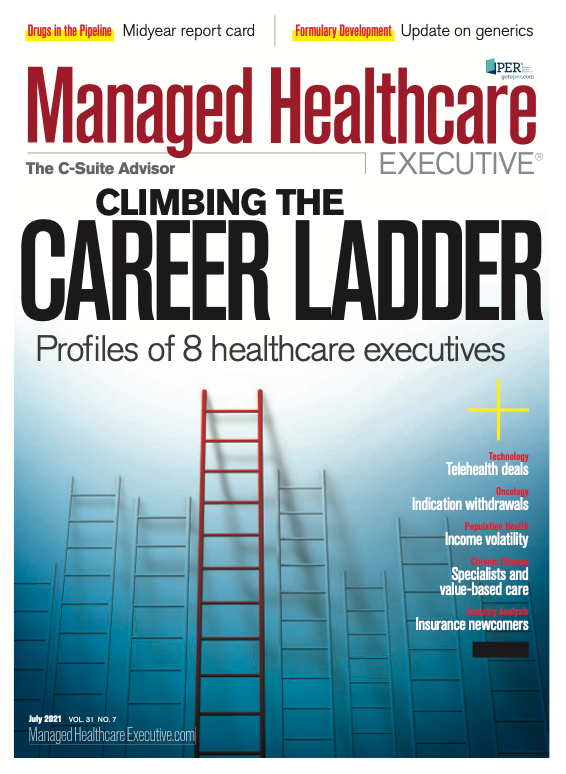- Drug Coverage
- Hypertrophic Cardiomyopathy (HCM)
- Vaccines: 2023 Year in Review
- Eyecare
- Urothelial Carcinoma
- Women's Health
- Hemophilia
- Heart Failure
- Vaccines
- Neonatal Care
- NSCLC
- Type II Inflammation
- Substance Use Disorder
- Gene Therapy
- Lung Cancer
- Spinal Muscular Atrophy
- HIV
- Post-Acute Care
- Liver Disease
- Pulmonary Arterial Hypertension
- Safety & Recalls
- Biologics
- Asthma
- Atrial Fibrillation
- Type I Diabetes
- RSV
- COVID-19
- Cardiovascular Diseases
- Breast Cancer
- Prescription Digital Therapeutics
- Reproductive Health
- The Improving Patient Access Podcast
- Blood Cancer
- Ulcerative Colitis
- Respiratory Conditions
- Multiple Sclerosis
- Digital Health
- Population Health
- Sleep Disorders
- Biosimilars
- Plaque Psoriasis
- Leukemia and Lymphoma
- Oncology
- Pediatrics
- Urology
- Obstetrics-Gynecology & Women's Health
- Opioids
- Solid Tumors
- Autoimmune Diseases
- Dermatology
- Diabetes
- Mental Health
Have We Hit the Breaking Point With Oncology Drug Prices?
Some see the upward trend in cancer drug costs as accelerating — and unsustainable. Value-based pathways might rearrange the incentives to put some downward pressure on prices.
ancer care is expensive and there have been countless journal articles, presentations and reports about why and what might be done about it. But now the worry has hit a new phase. Providers, payers and patients are wondering whether the cost, especially the cost of cancer medications, is sustainable.
In JAMA Oncology, three prominent oncologists compared the trend in cancer drug costs to the famous “hockey stick” graph showing the sudden rise in global temperatures in the late 20th century. Blase N. Polite, M.D., M.P.P., and Mark J. Ratain, M.D., oncologists at the University of Chicago, and Allen S. Lichter, M.D., former CEO of the American Society of Clinical Oncology, wrote that data from CMS’ Oncology Care Model show that drug costs accounted for more than 50% of the total cost of oncology care in 2018 and that proportion is projected to increase this decade. “What might the practice of oncology look like if the costs of the drugs alone exceed 80% of the cost of taking care of patients during the active phase of their care?” they asked rhetorically.
Chimeric antigen receptor (CAR)-T cell therapies, which involve genetically engineering a patient’s T cells so they recognize cancer cells, are among the most expensive cancer therapies. Prime Therapeutics, a PBM owned by 19 Blues Plans, presented a study at the Academy of Managed Care Pharmacy meeting in April that showed the cost is not just limited to the treatment period. Prime’s researchers identified 74 members over a 2.5-year period who received CAR-T cell therapy for B-cell lymphoma. Their real-world data study showed that almost 40% of those members did not have a durable response to CAR-T cell therapy. Prime’s cost figures show that CAR-T cell therapy alone cost $527,000 during the initial treatment period and that 12% of those with events after the initial period had care that resulted in healthcare costs of more than $1 million.
Costs as high as those invite cost-effectiveness scrutiny. The Institute of Clinical and Economic Review (ICER), the value assessment nonprofit group in Boston, issued its final report on the cost-effectiveness of two CAR-T cell therapies for multiple myeloma, Abecma (idecabtagene vicleucel) and ciltacabtagene autoleucel, in May. A third medication, Blenrep (belantamab mafodotin-blmf), an antibody-drug conjugate, was also analyzed.
To meet the standard cost-effectiveness of threshold of $100,000 per quality-adjusted life year (QALY), the ICER report says Abecma’s current annual price of $419,500 would need to be slashed by 37%-54% and ciltacabtagene autoleucel, which isn’t on the market yet, would need to be priced at about $300,000. Blenrep’s current price falls within acceptable cost-effectiveness thresholds, according to ICER.
Polite, Ratain and Lichter map out possible responses to rising cancer drug prices: shifting costs to patients (which would likely price many patients out of the care they need) or shifting financial risk on to providers via bundled payments and the like (which many providers will resist if the financial risk is too great). They portray “value-based pathways” as a hopeful alternative. Deviations from the pathways would result in financial penalties and adherence, in bonuses. If oncologists had a strong enough incentive to avoid prescribing low-value treatments, pressure to lower drug prices would follow, in their estimation, and drugmakers would start to develop drugs with value in mind.

Using the 'Pathway' Approach to Shorten the Time Between Cancer Diagnosis and Treatment
November 16th 2022In this episode of Tuning In to the C-Suite, Briana Contreras, editor with Managed Healthcare Executive spoke with Dr. Yuri Fesko, oncologist and vice president of Medical Affairs at Quest Diagnostics. In the conversation, Dr. Fesko addressed the ongoing issue of long gaps of times between receiving a diagnosis for a type of cancer and finally getting the treatment for it. Dr. Fesko shared the benefits a number of sectors receive when treating patients sooner and the steps to get there.
Listen
